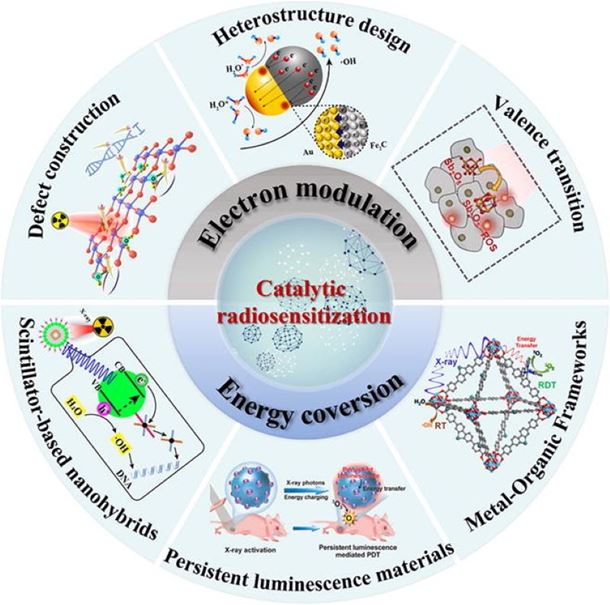Abstract
Radiotherapy is indispensable in clinical cancer treatment, but because both tumor and normal tissues have similar sensitivity to X-rays, their clinical curative effect is intrinsically limited. Advanced nanomaterials and nanotechnologies have been developed for radiotherapy sensitization, typically employing high atomic number (high-Z) materials to enhance the energy deposition of X-rays in tumor tissues, but the efficiency is largely limited by the toxicity of heavy metals. A new and promising approach for radiosensitization is catalytic radiosensitization, which takes advantage of the catalytic activity of nanomaterials triggered by radiation. The efficiency of catalytic radiosensitization can be greatly enhanced by electron modulation and energy conversion of nanocatalysts upon X-ray irradiation, further enhancing the clinical curative effect. In this review, we highlight the challenges and opportunities in cancer radiosensitization, discuss novel approaches to catalytic radiosensitization, and finally describe the development of catalytic radiosensitization based on an in-depth understanding of radio-nano interactions and catalysis–biological interactions.
See full text for more information.

Read full text on ScienceDirect
DOI: 10.1016/j.mattod.2022.05.022
Share this journal article